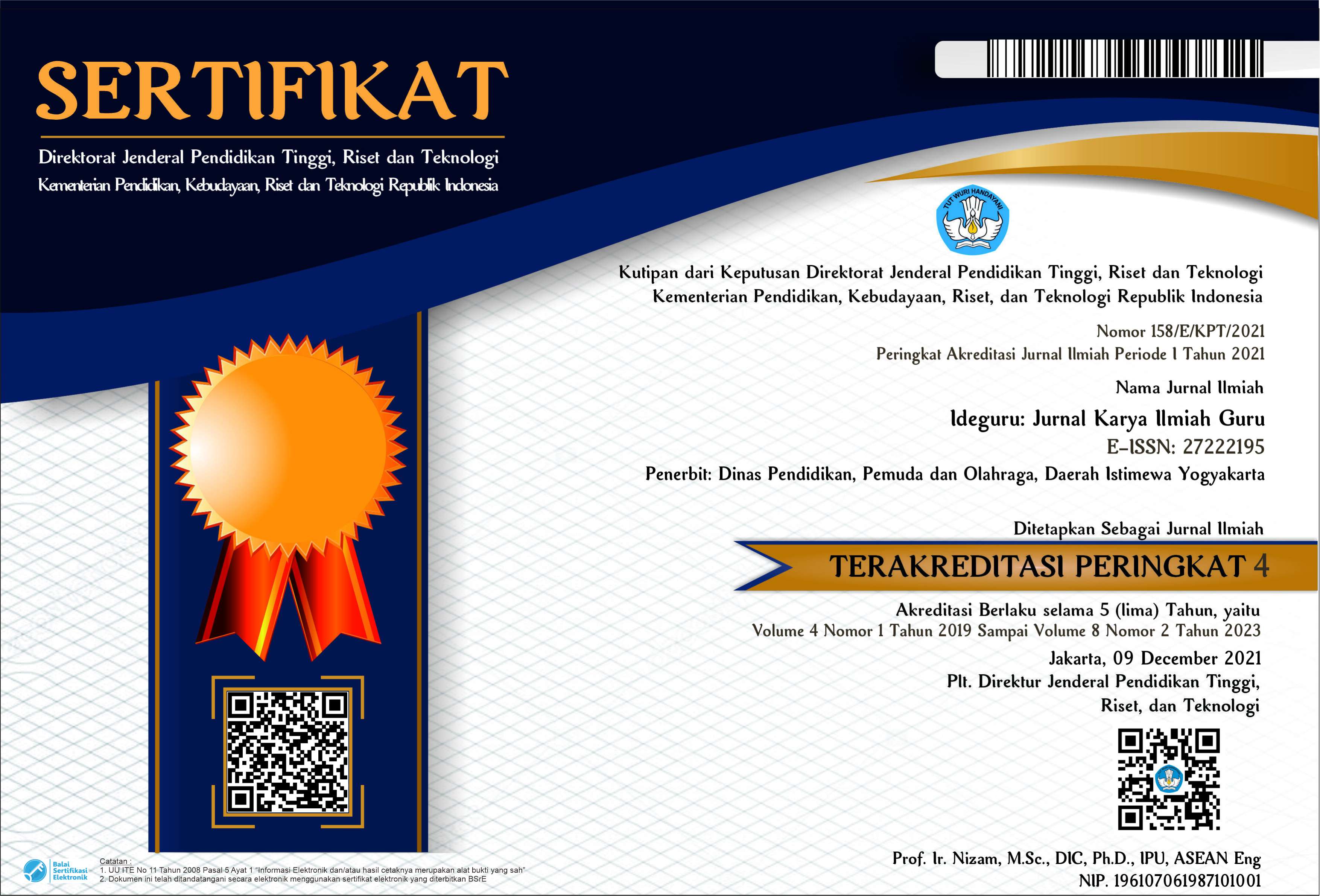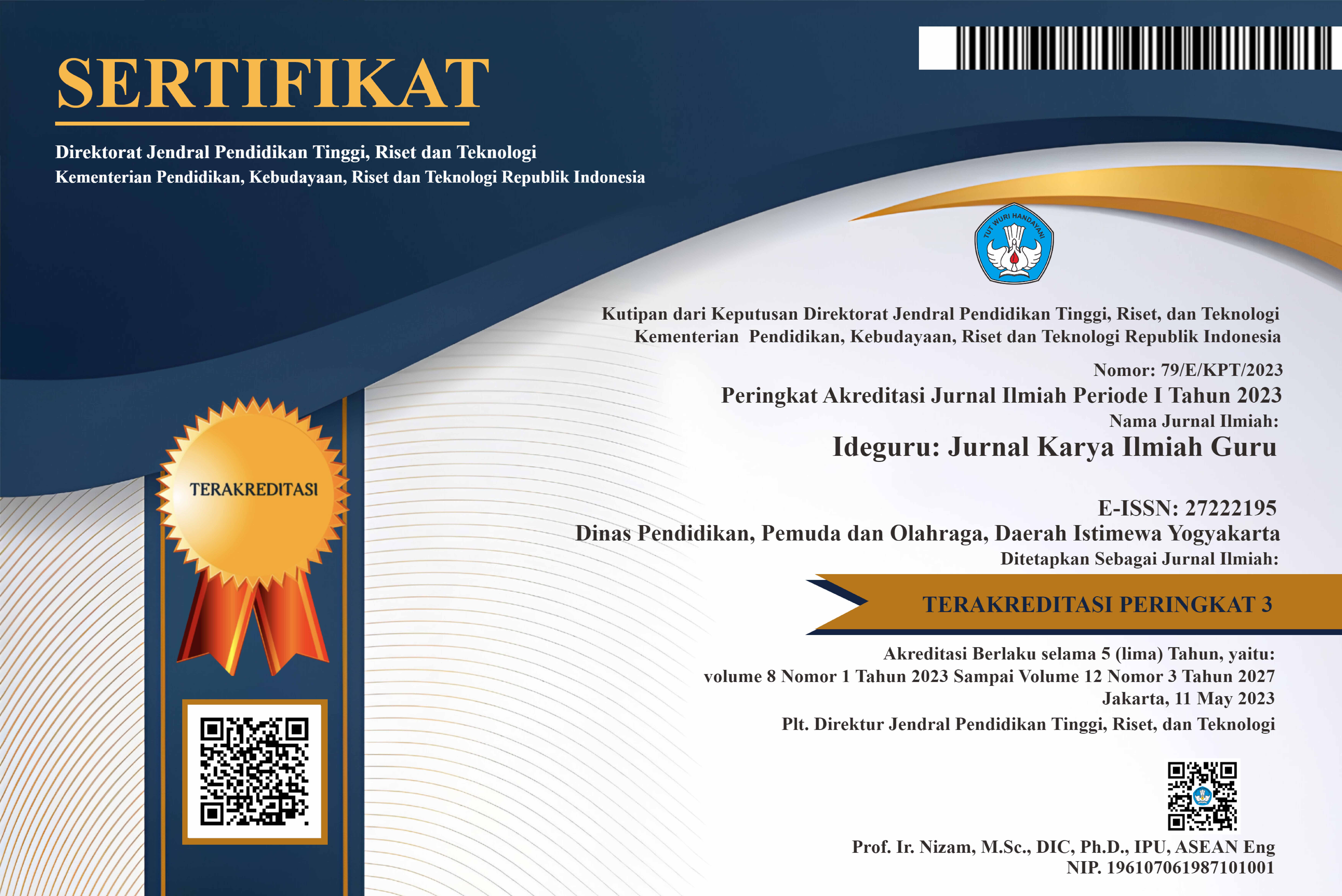Minimalisasi Kecemasan Matematika dalam Mixed-Ability Classroom dengan Pembelajaran Berdiferensiasi pada Materi Barisan dan Deret
Abstract
The purpose of this best practice is to find out how to minimize students' math anxiety in a mixed-ability classroom on Sequences and Series learning material with differentiated learning. Teachers can implement differentiated learning based on student readiness by designing content to meet the needs of all students. Learning is carried out using guided discovery. Students work in heterogeneous groups. The difficulty level of the problem is given in stages in Student Activity Sheets for groups or individuals, and Daily Tests. Scaffolding given according to the needs of students during learning. The average response score of students following the lesson was 4.49 out of 5.00. This shows that the teacher has carried out classroom management on most occasions. The average percentage of meeting the needs of students in the group is 97.67%. The average achievement of completing group and individual LKS was 97.78 and 89.30 respectively. The mean of the daily test results for the group below the average was 73.50, the average group was 85.88, and the group above the average was 92.98. The distribution of the number of students before implementing differentiation learning was 9 people with high anxiety, 19 people with moderate anxiety, and 8 people with low anxiety. After implementing differentiation learning, there were 3 people with high anxiety, 15 people with moderate anxiety, and 18 people with low anxiety. These results indicate that differentiated learning can be used to minimize the level of students' math anxiety in a mixed-ability classroom.
PDF Downloads
Copyright (c) 2023 Suyanto Suyanto

This work is licensed under a Creative Commons Attribution 4.0 International License.

 DOI:
DOI:














